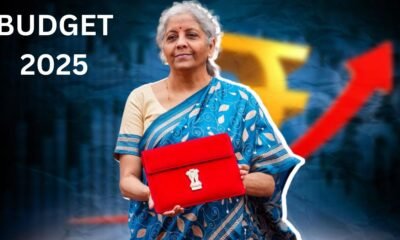Published
10 months agoon

The GST Council has approved an increase in the Goods and Services Tax (GST) on the sale of old and used vehicles, raising the rate from 12% to 18%. This revised tax applies to vehicles sold with a margin by businesses claiming depreciation. In contrast, individuals buying or selling used vehicles will continue to be taxed at the lower 12% rate, maintaining affordability in personal transactions.
However, there are certain concerns that need to be addressed.
A Broader Shift in Vehicle Taxation
The decision aligns with the council’s comprehensive tax framework for vehicles. Under existing norms, used petrol, LPG, and CNG vehicles with engine capacities of 1200cc or more and lengths exceeding 4000mm, as well as diesel vehicles with engines of 1500cc or more and SUVs with capacities over 1500cc, are already taxed at 18%.
The new ruling extends this higher rate to vehicles previously taxed at 12%, including old electric vehicles (EVs) when resold by businesses.
A Heavy Blow to Businesses—Will Customers Bear the Brunt?
Firstly, this new rule will give a direct hit to business margins. For businesses operating in the used car market, the hike to 18% GST is a significant escalation of costs.
Previously, vehicles were taxed based on the supplier’s margin, offering businesses a manageable tax burden. The new structure not only increases the tax liability but also impacts operational costs, particularly for those engaged in refurbishing and reselling vehicles.
In the case of electric vehicles (EVs), the implications are even more severe. While new EVs enjoy a preferential 5% GST rate, resold EVs now fall under the 18% slab.

Can Businesses Pass the Cost to Customers?
One possible response from businesses is to pass the increased tax burden onto customers by raising prices.
However, this approach would carry its own risks –
Industry analysts warn that the higher GST could slow the growth of the used car market, which has flourished under a favorable tax structure. For businesses, this is a critical juncture: adapting to the new reality without alienating customers will be key to survival.
While, the government aims to boost revenue through this tax adjustment, but the move could inadvertently strain businesses and middle-class car owners reliant on affordable used vehicles.
EV Promotion Will Take A Hit?
The disparity between the 5% GST on new EVs and the 18% rate on resold EVs shows a policy contradiction.
This policy reversal raises critical questions about its potential impact on the EV ecosystem, particularly as India strives to reduce its carbon footprint and transition to cleaner mobility.
Until now, the government has incentivized EV adoption through measures like new EVs are taxed at just 5%, making them an attractive option for buyers. Various state and central government schemes offer subsidies to make EVs more affordable. Buyers of EVs have been eligible for income tax deductions on loans for EV purchases.
The reclassification of used EVs under the 18% GST slab disrupts this trajectory. While new EVs remain tax-advantaged, the higher tax on resold EVs could discourage many middle-income buyers who relied on the affordability of used EVs to make the switch from conventional vehicles. A higher GST increases resale prices, potentially discouraging adoption.
Similarly, resale markets are essential for creating a circular economy, allowing vehicles to be reused and recycled efficiently. A higher tax could shrink this market, forcing owners to hold onto vehicles longer or avoid buying altogether.
The new GST structure doesn’t directly impact new EV sales but creates indirect repercussions for manufacturers as well. To illustrate such – a thriving resale market supports the primary market by improving the residual value of vehicles. A weakened second-hand market could lower the perceived long-term value of EVs, affecting new sales.
Manufacturers have been working to build robust ecosystems, including resale, trade-in, and refurbishment programs. The higher tax on used EVs complicates these efforts, making it harder for manufacturers to offer attractive trade-in deals or create certified pre-owned EV programs.
The direct impact would be that consumers are less likely to invest in EVs if they perceive uncertainties in resale value or affordability in the second-hand market. This could slow the pace of EV adoption overall.
/tice-news-prod/media/media_files/2024/12/16/lAXE9kKdYDqrfUIIU6Vy.jpg)
Broader Implications for Sustainability Goals
India’s ambitious targets to reduce its carbon footprint and promote EVs as a key part of its green mobility strategy could face setbacks due to this tax revision.
A growing second-hand EV market was expected to complement new sales, particularly in Tier 2 and Tier 3 cities. The higher tax disrupts this dynamic, slowing overall penetration.
EVs are central to reducing vehicular emissions. Discouraging their resale delays their widespread adoption, which is crucial for meeting India’s climate goals.
The Last Bit
The increase in GST on used cars, including electric vehicles, from 12% to 18% introduces significant challenges for businesses, consumers, and the broader EV ecosystem. While the government aims to boost revenue, the decision risks slowing the growth of the used car market, increasing operational costs for businesses, middle class aspirations and undermining India’s green mobility goals.
For businesses, the higher tax could compress margins and force difficult choices, such as passing costs to customers or rethinking operational strategies. For EVs, the higher tax on resales contradicts earlier incentives designed to encourage adoption, potentially stalling progress in reducing carbon emissions and achieving sustainability targets.



All About The Union Budget 2025-26—Worthy of Claps, Or Is There Something Lurking That We May Have Missed?


Budget 2025. What’s FM’s Game Plan? Boost Growth, Cut Deficit, Or Finally Listen To The Struggling Middle Class?


The Middle Class Conundrum. Will Budget 2025 Solve It? Highly Unlikely. Here’s Why.


The Story Of Soaring Loans…And Defaults. How Credit Has Taken Over Lives With Little Deposits. No Salary Hikes But Living Costs Remain Steady, An Overall Rough Ride?


Tax Here, Tax There, Everywhere Tax, Tax. Why Is Everything About Taxes In India? Why Nirmala Sitharaman’s Tenure Has Failed To Leave A Mark?


Get Ready To Hold Your Fist Even Tighter. Prices Across FMCG Set To Jump 5-20%, But For The Government, It’s A Win As GST Collections Will Fill Their Coffers!